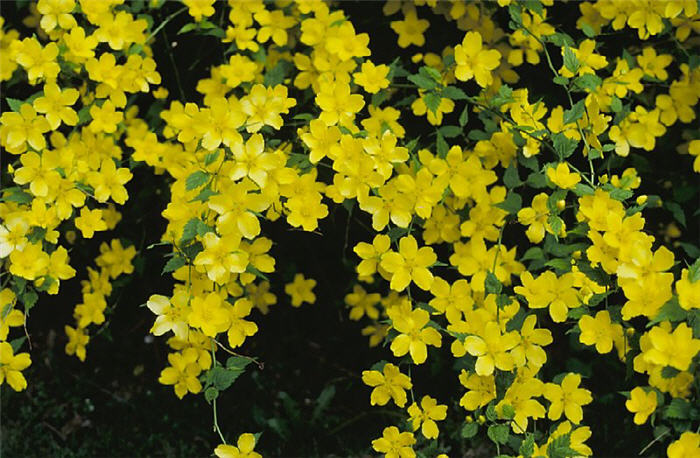| Botanical Name: Kerria japonica | |
| Common Name: Japanese Kerria |

-
Anatomy
-
Culture
-
Design
Plant Type
Shrub
Height Range
6-12'
Flower Color
Yellow
Flower Season
Spring
Leaf Color
Green
Bark Color
Green
Fruit Color
n/a
Fruit Season
n/a
Sun
Half, Shade
Water
Medium
Growth Rate
Moderate
Soil Type
Clay, Loam
Soil Condition
Average, Rich, Well-drained
Soil pH
Neutral, Basic
Adverse Factors
n/a
Design Styles
English Cottage, Japanese, Woodland
Accenting Features
Showy Flowers
Seasonal Interest
Winter, Spring
Location Uses
Background, Shrub Border, Foundation, Walls / Fences
Special Uses
Cut Flowers, Hedge, Screen
Attracts Wildlife
n/a
Information by: Stephanie Duer
Photographer: JJ Neilson Arboretum
Photographer: JJ Neilson Arboretum
-
Description
-
Notes
Kerria is an old-fashioned, deciduous shrub with an upright and arching habit, similar in form to bridalwreath spirea. It grows about 6 to 8 feet tall with an equal spread. It has bright yellow flowers that cover the branches from April to early May. Leaves are oval-to-lance shaped, toothed, with prominent veins. Stems are bright green and retain that color all winter. There are several selections, including 'Pleniflora' which has double-petaled flowers and grows about 8 to 10 feet tall and wide; and 'Golden Guinea' with flowers larger than the species, and growing 6 to 8 feet tall and 5 to 6 feet wide.
Grow in loamy, well-drained soil in part to full shade. Though it can grow in full sun, the flowers will fade quickly and the leaves will look parched and scorched by summer. Blooms on previous years wood, so prune after flowering, either selectively or to renovate (see Guides).